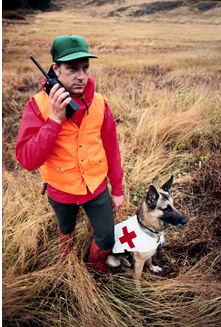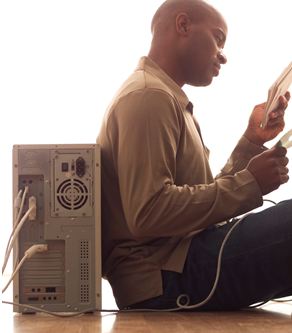Sought Content (RTFM – read the fascinating manual)
This is Day 4 of 30 Days of Integrated Assistance .
The customer must be able to seek and find content at any time. Providing customers with the basics of what they require is the least that we can do. It doesn’t have to be a ton of content. It just has to be enough to answer their basic questions.
This continues my discussion in the Day 3 post, Solicited Content (remember Clippy? now forget him).
In this article:
- Sometimes People Care
- Comfort is King
- Search and Rescue
- RTFM - Read the Fascinating Manual
- The Help Button - Like a syringe of adrenaline into an overdosed heart
- If You Build It, Will They Come?
Sometimes People Care
We can’t cram every hint and bit of information into the interface. Some topics are way too complicated, and they require a lot of text and pictures or a video. Sometimes it’s too difficult from a technical standpoint or too costly to get a lot of content integrated into the interface.
Sometimes people care. They really want to know about the product, and there’s only one way to do that to completion. We have to provide a lot of text and/or video content.
That means that we need to find an easy way to put content out there that our users can get to, even if it’s in a different interface. We need to make the experience comfortable, and…
Comfort Is King
Sometimes people want content, and they want to find it in ways that are familiar to them. People will often choose something that is familiar over something that is “better.” The reason is because the barrier to adoption to learn something new could be greater than the perceived value of the new tool or method. And to people, perception is reality.
So we make our customers comfortable when we provide content in a consistent way to what our customers are used to. Wow, this guy’s easy to see…
Search and Rescue
Users are used to search (thanks to sites such as Google, Bing, Facebook, Twitter, and YouTube), and they expect to find a list of categories or topics. We should meet those expectations.
For an example of search in an interface, users can use a search box to search topics or browse from a short, drop-down list of the most common scenarios (the list would be designed to not provide too many choices, while the search and context tips allow users to find all the choices). The list also could include some top tutorials. Then the results can bring up a window or section of the interface that feels like it’s still part of the application (and can include video and other rich content). That would be an easy and accessible way for customers to get to more content without forcing them into a new interface (easy and accessible for customers; it might be harder for us as developers).
But search doesn’t always work. You don’t always know what you’re looking for, and so you have to…
RTFM – Read the Fascinating Manual
Sometimes you just need to read the manual. You need to know what you’re missing. You need to know how to use Expression Web to make interactive Web sites, and you know that you’ll learn a lot more if you read the manual.
Or perhaps you’re putting your computer or desk together. You know that if you at least skim through the manual, then you will make your life easier. I always read the manual when I bought a new videogame. I didn’t want to invite my friends over, only to have them show me up because they knew a move that I didn’t! I wanted to know how to do everything, and I knew that I’d only get that if I read the manual.
The Help Button—Like a syringe of adrenaline into an overdosed heart
What comes to mind is when Mia Wallace overdoses on heroin in Pulp Fiction, thinking that it’s cocaine. They think she is dying and in a mass of hysteria, which culminates when Vincent injects a shot of adrenaline directly into her heart. (Which apparently is not a good thing to do in real life, but it worked very well in the movie.)
It was a moment of desperation, and in that moment they were searching for something madly. That’s the relief that the Help button can sometimes bring when madness starts to set in. It’s the 911 phone number that you can grab in emergencies.
When I was working on Microsoft Surface, we had some feedback from people who were interested in the applications, but they couldn’t find the Help button. Sometimes it really upset them, almost like something promised to them was missing. They wanted to read the manual, and the Help button is the portal.
If You Build It, Will They Come?
If you put an article out there on the Internet or add a Help topic in your viewer, will your users read it? Will they find it?
There are many ways to get content out to where users can find it, but if they can get to it directly from the interface, in context, then they are far more likely to find the content than if it’s buried in Help topics or difficult to find in searches.
Got stories or examples for me to add? Comment them or tweet me, and I’ll add them.
In your efforts to provide an amazing experience, may you not forget to provide the basic Sought Content,
- User Ed
This is Day 4 of 30 Days of Integrated Assistance .





